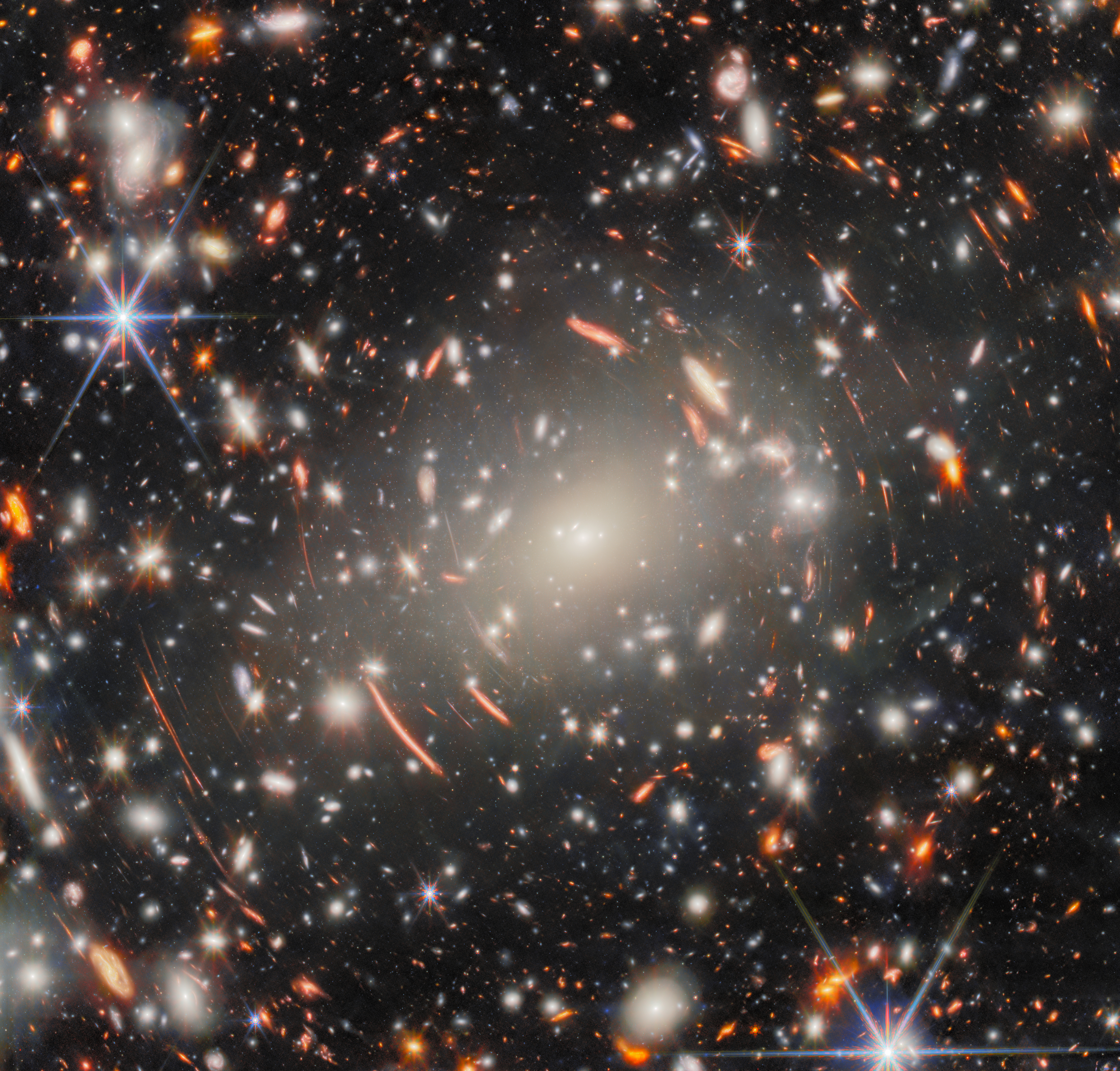This is the universe like you have never seen before. Thanks to the extraordinary sharpness of JWST, many hours of work, and the warping of spacetime by a massive galaxy cluster, we have some of the oldest starlight that has ever been seen in the universe.
The image took nine snapshots and 120 hours of observing time; it is currently the longest exposure yet from JWST. As the image description points out, the eye focuses on the central mass. That’s galaxy cluster Abell S1063, located 4.5 billion light-years from Earth and appearing in the constellation Grus, the Crane.
The cluster is massive, weighing a trillion times the mass of our Sun, with over 50 confirmed galaxies and maybe hundreds of smaller ones. It’s so massive and dense that its gravity has bent the surrounding spacetime, which now acts like a magnifying lens, distorting the light of background objects.

The arcs are the thing!
Image credit: ESA/Webb, NASA & CSA, H. Atek, M. Zamani (ESA/Webb)
And this is where the uniqueness of the image lies. Streaks and arcs of red that appear around the cluster like ripples in a disturbed pond are what we are looking for. These are light from some incredibly distant galaxies, made of starlight from some of the first stars that ever shone. The very first stars? We do not know that yet. The GLIMPSE team, who conducted these observations, will have to work out just how old these objects are.
This is why gravitational lensing is special. It allows astronomers to look further back into the universe than with a telescope alone. JWST has already found some of the most distant galaxies that ever existed, whose light had to travel for 98 percent of the age of the universe to reach us.
With gravitational lensing, researchers can see dimmer galaxies at the same distance or see brighter galaxies that are farther away. After all, looking back into the universe is like looking back in time due to the finiteness of the speed of light.
The GLIMPSE survey aims to probe the period known as the Cosmic Dawn, when the universe was only a few million years old, and the very first stars – the yet unobserved Population III – shone. It is a challenging observation goal, but the breathtaking image alone would make it worth it. Imagine when we get insight into some of the most distant galaxies that ever existed!
Source Link: Peer Into The Universe's Distant Past Thanks To JWST's Longest-Exposure Photo Yet